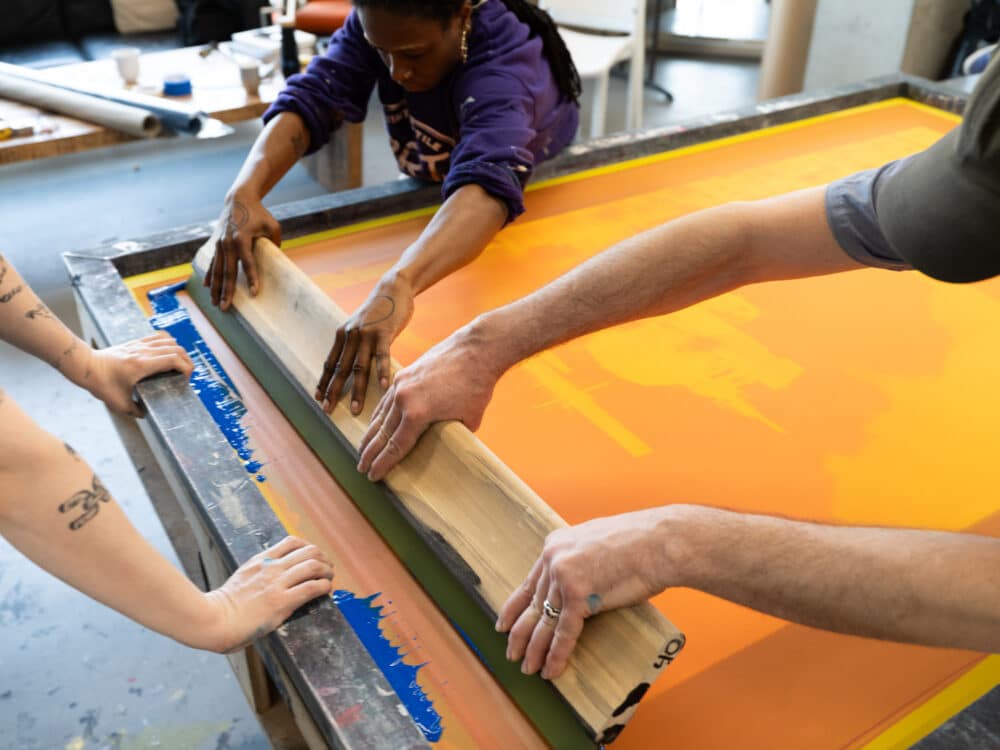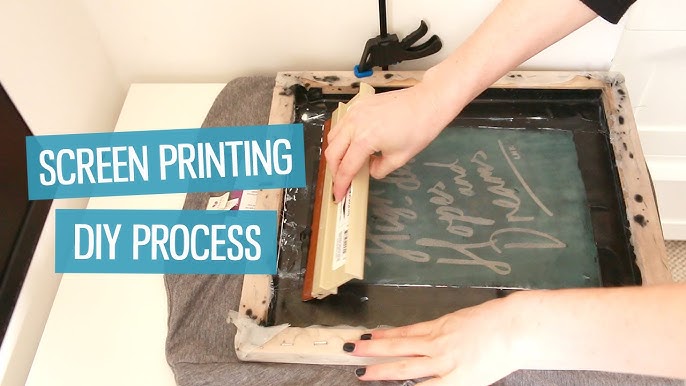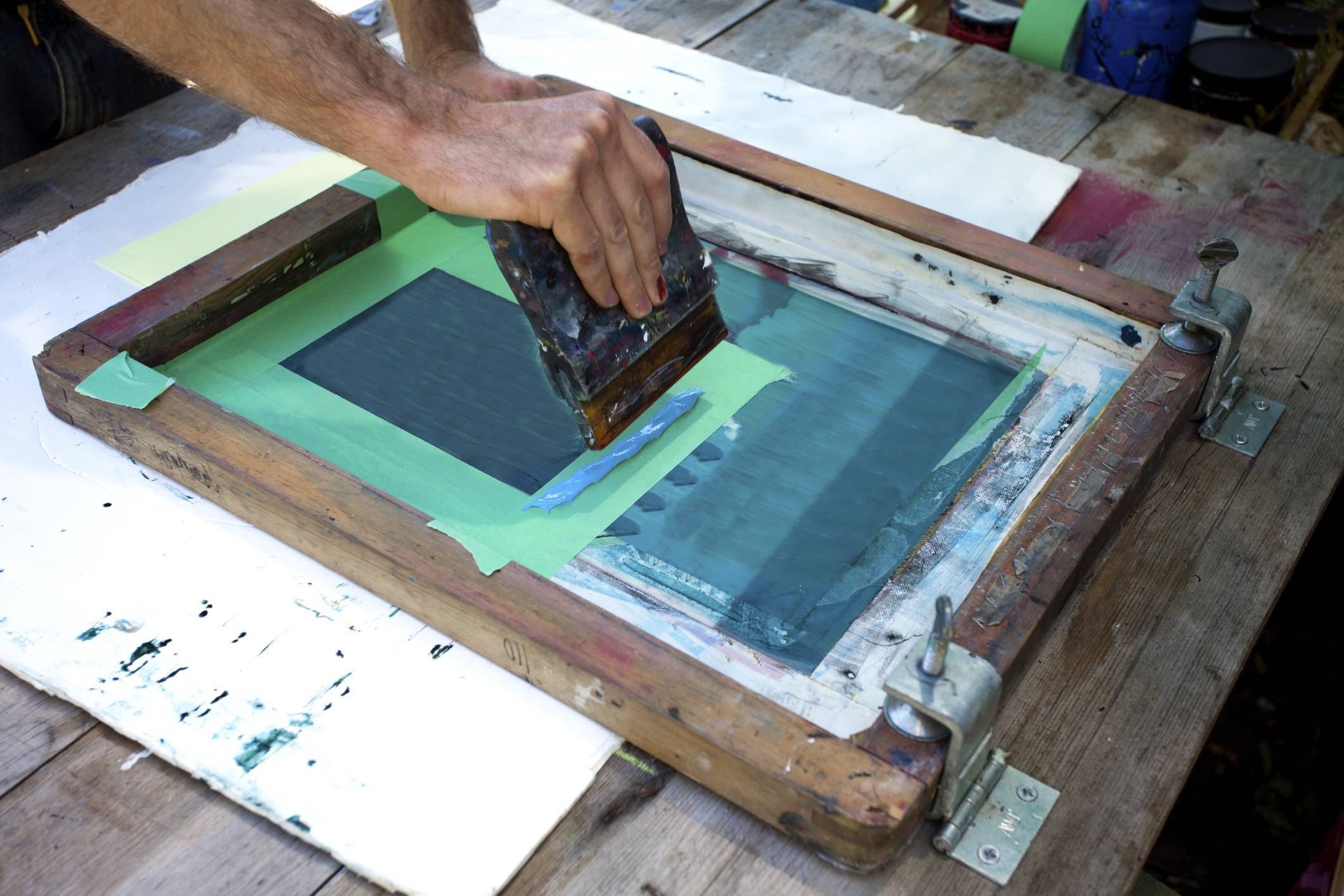The Necessary Overview to Comprehending Screen Printing and Its Versatile Makes use of
Screen printing has an abundant history that goes back to old times, developing right into an advanced method used across numerous sectors today. This overview checks out the complexities of the screen printing procedure, detailing its applications in advertising and marketing, home, and style style - 10:9 Design Company. Understanding these principles can open up creative capacity for both imaginative and business tasks. The complying with sections will expose crucial pointers and methods to improve one's screen printing ventures
The History of Screen Printing
Screen printing has roots that map back centuries, its development reflects the technological and creative developments of various cultures. Stemming in old China, the strategy was at first used for decorating textiles and later infect Japan, where it came to be important to Ukiyo-e woodblock printing. The approach moved to Europe in the 18th century, where it obtained appeal amongst artisans and business printers. The development of image solution in the 20th century transformed screen printing, enabling for even more intricate layouts and better performance. Musicians like Andy Warhol better drove its appeal, making use of the medium to produce legendary jobs that blended commercialism and fine art. By the late 20th century, screen printing had developed itself as a functional strategy, used in vogue, marketing, and great art. Today, it remains to progress, integrating electronic innovation and expanding its applications across numerous markets.
The Screen Printing Process Explained
Screen printing transforms imaginative visions into substantial layouts via a series of precise actions. An image is produced and then transferred onto a screen, commonly made of fine mesh textile stretched over a frame. A light-sensitive emulsion is related to the screen, which is revealed to light, setting in areas not covered by the picture. After cleaning out the unhardened solution, a pattern is formed.
Next off, the screen is placed over the substratum, whether it be fabric, paper, or an additional product. Ink is after that pressed through the open locations of the stencil using a squeegee, transferring the layout onto the substrate listed below. This procedure can be repeated for several colors, requiring separate screens for every hue. Lastly, the published thing is cured using warmth to ensure the ink sticks effectively, leading to a resilient, dynamic layout ready for use.
Kinds of Screen Printing Techniques

Furthermore, specialized methods, such as discharge screen printing, eliminate color from the textile to develop softer prints, while aluminum foil screen printing applies metal foil to attain a glossy surface (10:9 Design contact). Each method uses distinct attributes, catering to different creative demands and production ranges, eventually increasing the opportunities within the screen printing domain
Applications of Screen Printing in Numerous Industries

Additionally, the signs and marketing industries utilize screen printing for producing distinctive screens and banners. This approach permits strong colors and elaborate layouts that record interest. In electronic devices, screen printing is utilized for using conductive inks to motherboard, necessary for element connections. The home décor market embraces screen printing to generate distinct styles on textiles and wall art. Generally, screen printing works as an essential device throughout diverse areas, improving products with personalized and aesthetically enticing graphics.
Tips for Effective Screen Printing Projects
While undertaking a screen printing task, cautious focus to information can considerably improve the last outcome. Selecting premium materials is essential; this consists of the screen, inks, and substrates. Utilizing proper mesh matters can influence ink deposition and information resolution. Prep work is equally essential; complete cleansing of displays and proper exposure times ensure crisp prints.
Next, accurate enrollment is important for multi-color prints. Making use of alignment devices can aid achieve accurate layering. Furthermore, testing prints on scrap materials prior to production helps recognize possible issues without losing sources.

Frequently Asked Concerns
What Materials Are Best for Screen Printing on Fabric?
Cotton and polyester blends are ideal for screen printing on textile because of their durability and ink absorption. Additionally, specialty textiles like silk or canvas can produce unique appearances and finishes, enhancing the total layout high quality.
Just how Do I Tidy and Maintain Screen Printing Devices?
To clean up and keep screen printing tools, one must on a regular basis wash displays with suitable solvents, check mops for wear, lubricate moving parts, and store all things in a completely dry, dust-free environment to prolong their life expectancy.
What Are the Ecological Influences of Screen Printing?
Screen printing can have considerable ecological more info effects, consisting of chemical waste from inks and solvents, water use during cleansing processes, and power consumption. Environmentally friendly materials and sustainable techniques are important for minimizing these unfavorable results.
Can Screen Printing Be Done in your home Efficiently?
Screen printing can be effectively done at home with the appropriate materials and strategies. Enthusiasts can develop top quality prints, though success depends on their skill degree, equipment, and understanding of the process included.
What Are the Prices Connected With Beginning a Screen Printing Business?

Starting a screen printing business entails prices for equipment, materials, and work area. Preliminary expenses usually range from a few hundred to several thousand bucks, relying on the scale, top quality of machinery, and desired production ability.
Screen printing has a rich history that dates back to old times, progressing right into an innovative strategy used across numerous sectors today. An additional method, rotating screen printing, employs cylindrical displays, helping with constant printing on textile rolls, therefore improving performance for large-scale manufacturings. In addition, specialty techniques, such as discharge screen printing, get rid of dye from the fabric to create softer prints, while foil screen printing applies metal foil to attain a glossy surface. In the style market, screen printing is commonly utilized to create vibrant styles on garments, enabling brands to display their unique designs. Cotton and polyester blends are optimal for screen printing on textile due to their durability and ink absorption.